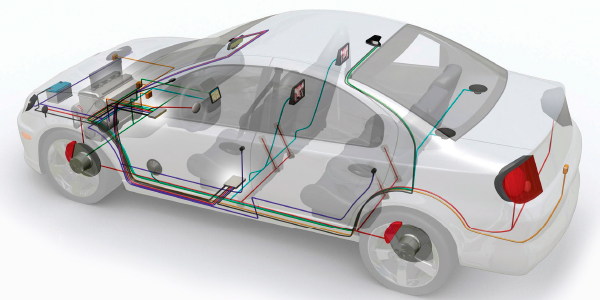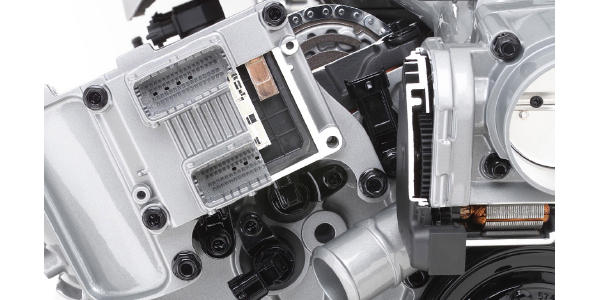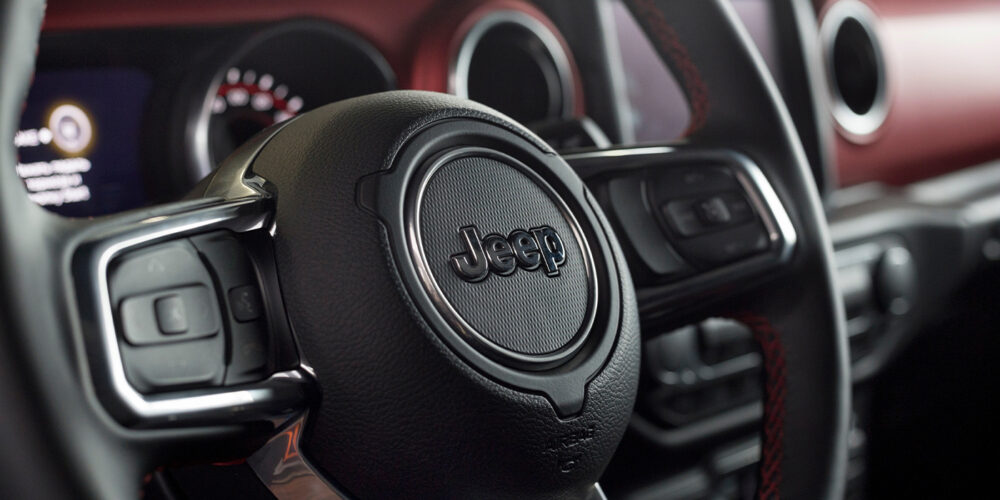
When a late-model car or truck is started, it is a lot more than the switch activating a solenoid for the starter. Now, it is a series of handshakes and exchanges of information between modules over networks.
When the key is inserted, or the key fob gets near the vehicle, security information is transmitted. The data is passed to the first module in the chain through an antenna. On some vehicles, it could be a dedicated security module, body control module (BCM) or even the instrument cluster.
The next modules in the chain could include the powertrain, infotainment and ABS. As the modules wake and start talking, the decision is made to start the engine and activate other systems on the network.
Modules are connected to high-speed networks with typically just two wires. These network wires or communication lines only transmit power that is switched on and off. These changes in voltage and the length of the switches are translated into ones and zeros by the modules.
The ones and zeros make up the basic language that allows the modules to communicate and share information quickly. This switching is fast, so large amounts of data can be transmitted in short bursts.
For modules to communicate and receive information, they need to not only be speaking the same language, but they also need to be talking in the native tongue for that vehicle’s make, model and options. The language is a closely guarded secret by the OEMs because they spend many hours engineering code, so it works on the vehicle. This is why some reprogramming or reflashing procedures require a J2534 pass-thru programmer.

Casual Conversation
When a driver is attempting to start an engine, the conversation between the modules may go something like this:
BCM: This is the BCM #4567, a key is present with a valid code of 123456 and the driver is attempting to start the vehicle, over.”
ECM: This is ECM #5675 listening and code 123456 matches what is in my memory, over.”
ABS: This is ABS module #9823, the brake pedal is not depressed – do not start ECM #5675, over.”
While this is an oversimplified conversation, it illustrates why modules on a network need to communicate their identity and know the identity of the other modules.
Think of it as an address book programmed into the module at the factory. If a module is replaced, this address book needs to be reprogrammed into the affected module. The address book is also unique to the vehicle because it contains the VIN and security information.
This unique address book is why swapping modules on a vehicle may not solve a problem or allow you to proceed with further diagnostics. It is also why some modules must be reprogrammed while on the vehicle.
Reprogramming
Reprogramming some modules may require a scan tool and is very simple. With this type of reprogramming procedure, the scan tool can put the module in a relearn mode to find other modules on the network. Specifics like the type of infotainment system or if it has memory seats.
In the case of a BCM, ECU or other security-related modules, it might require additional procedures and tools to relearn the VIN, key and keyless entry information.
For some modules, the only option is pass-thru reprogramming with a J-2534 tool to get a module to communicate.
Article courtesy Underhood Service.













